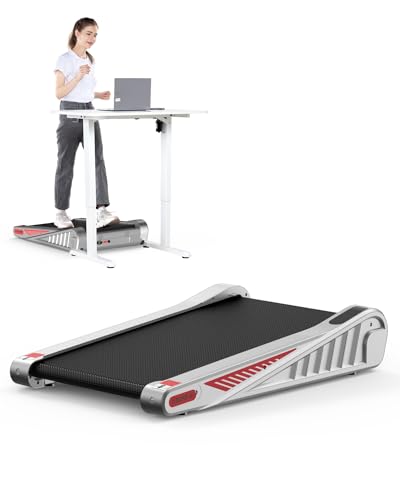Non-Folding Treadmills: The Ultimate Guide for Fitness Enthusiasts
As home physical fitness continues to gain traction, numerous individuals are seeking devices that satisfies their needs without compromising quality or efficiency. One key player in this arena is the non-folding treadmill. Unlike folding treadmills, which are developed for compactness and portability, non-folding treadmills are generally more robust, using boosted toughness and machine efficiency. This guide will check out the functions, benefits, restrictions, and alternatives available for non-folding treadmills.
What is a Non-Folding Treadmill?
A non-folding treadmill is a stationary workout machine that does not have the ability to fold its deck for storage. Specifically designed to be a long-term component in physical fitness spaces, these treadmills normally have a bigger footprint, permitting for a host of comfy functions suited for major runners and gym-goers.
Advantages of Non-Folding Treadmills
- Stability and Durability: Non-folding treadmills usually have a sturdier construction, providing them improved stability throughout high-intensity workouts. They are constructed to handle varied user weights and running paces, which can extend their lifespan.
- Advanced Features: Many non-folding models come geared up with sophisticated technological features, such as wise monitor systems, automated incline changes, and pre-set workout programs, which accommodate serious physical fitness enthusiasts.
- Larger Running Surface: These treadmills typically supply a wider and longer running location, which can be especially beneficial for runners who choose to train at greater speeds or for those with longer strides.
- Better Motor Performance: Non-folding treadmills typically have more powerful motors compared to their folding equivalents, permitting much better performance during intense running sessions.
Drawbacks of Non-Folding Treadmills
- Area Requirements: Since they do not fold, non-folding treadmills need more space in your house or gym. If visit link is a restraint, this might be a critical factor to consider.
- Absence of Portability: These machines can be troublesome to move. It is challenging to relocate a non-folding treadmill compared to a folding one, which might be a drawback for those who move frequently or reorganize home fitness center layouts typically.
- Price: Non-folding treadmills are normally more costly than folding treadmills, generally due to their advanced features and resilient construct.
Secret Features to Consider
When trying to find the right non-folding treadmill, several functions should be considered to guarantee you make a notified decision:
| Feature | Importance |
|---|---|
| Motor Power | Look for a motor of at least 2.5 CHP for strong performance. |
| Belt Size | A belt width of 20 inches or broader is ideal for convenience and safety. |
| Incline Range | An incline of 10% to 15% offers more exercise variety. |
| Technology Integration | Consider designs with Bluetooth capabilities, exercise apps, and heart rate monitoring. |
| Guarantee | A robust warranty (a minimum of 10 years for the frame and motor) indicates toughness. |
Leading Non-Folding Treadmills on the marketplace
Here is a detailed summary of some of the leading non-folding treadmills currently offered:
| Treadmill Model | Motor Power (CHP) | Running Surface (inches) | Incline (%) | Price Range (GBP) | Warranty |
|---|---|---|---|---|---|
| NordicTrack Commercial 1750 | 3.75 | 22 x 60 | 15 | ₤ 1,799 - ₤ 2,199 | 10-Year Frame, 2-Year Parts |
| Sole F85 | 3.5 | 22 x 60 | 15 | ₤ 1,699 - ₤ 2,099 | Lifetime Frame, 5-Year Parts |
| Life expectancy TR3000i | 2.5 | 20 x 56 | 15 | ₤ 999 - ₤ 1,299 | Lifetime Frame, 5-Year Parts |
| ProForm Pro9000 | 3.0 | 22 x 60 | 15 | ₤ 1,499 - ₤ 2,299 | Lifetime Frame, 2-Year Parts |
| Horizon Treadmill 7.0 AT | 3.0 | 20 x 60 | 12 | ₤ 899 - ₤ 1,099 | Lifetime Frame, 1-Year Parts |
FAQs About Non-Folding Treadmills
1. Are non-folding treadmills much better than folding ones?Non -folding treadmills generally offer much better stability, sturdiness, and more advanced features. This makes them perfect for major runners, however it ultimately depends on individual requirements and readily available space.
2. Can a non-folding treadmill be utilized for walking?Yes! Non-folding treadmills are not restricted to running; they can also be ideal for walking and can accommodate a large range of fitness levels. 3. How much space do I need for a non-folding treadmill?It is suggested to have a devoted area determining a minimum of 7 feet long and 3 feet wide around the treadmill for safe usage. 4. Is it possible to transfer a non-folding treadmill?While it can be done, it might require additional effort as they are typically much heavierand bulkier than folding models. 5. What's the typical life expectancy
of a non-folding treadmill?With routine maintenance and appropriate usage, non-folding treadmills can last in between 10 and 15 years or more.
Non-folding treadmills represent a significant financial investment
for those major about maintaining or improving their health and physical fitness. With their emphasis on resilience, stability,
and improved functions, they deal with users pursuing performance and durability. Picking the ideal model includes carefully considering your exercise routines, space availability, and budget plan. By comprehending the qualities that make non-folding treadmills an excellent option, individuals can make educated decisions that will enhance their home fitness experience. Whether it's for walking, jogging, or high-intensity training, the right non-folding treadmill can be a significant ally in attaining fitness objectives.

